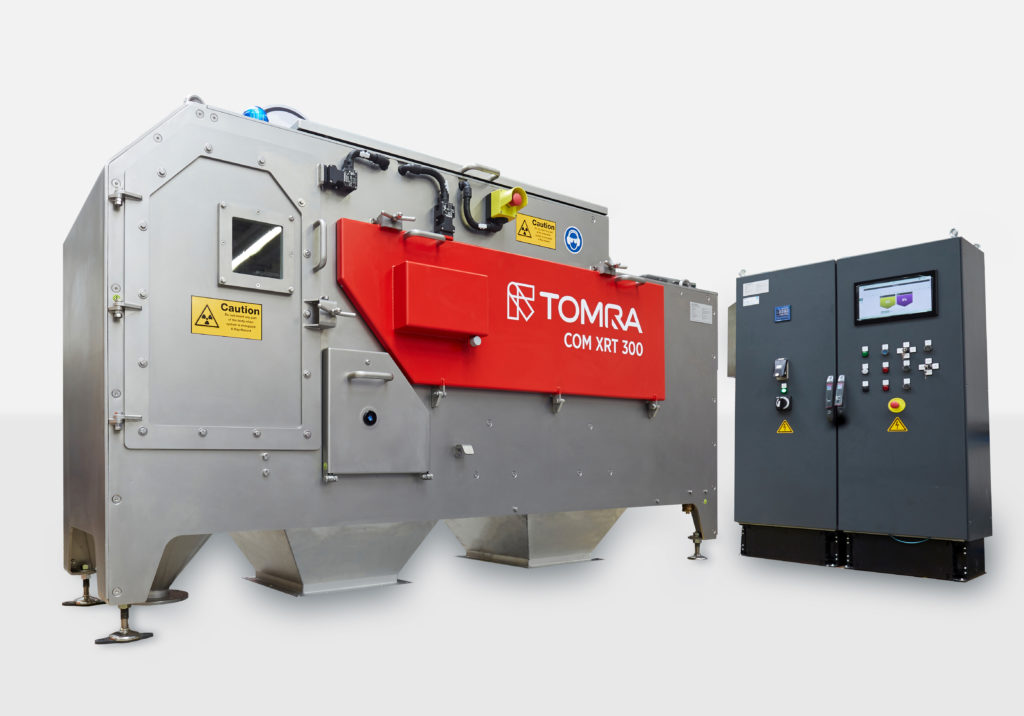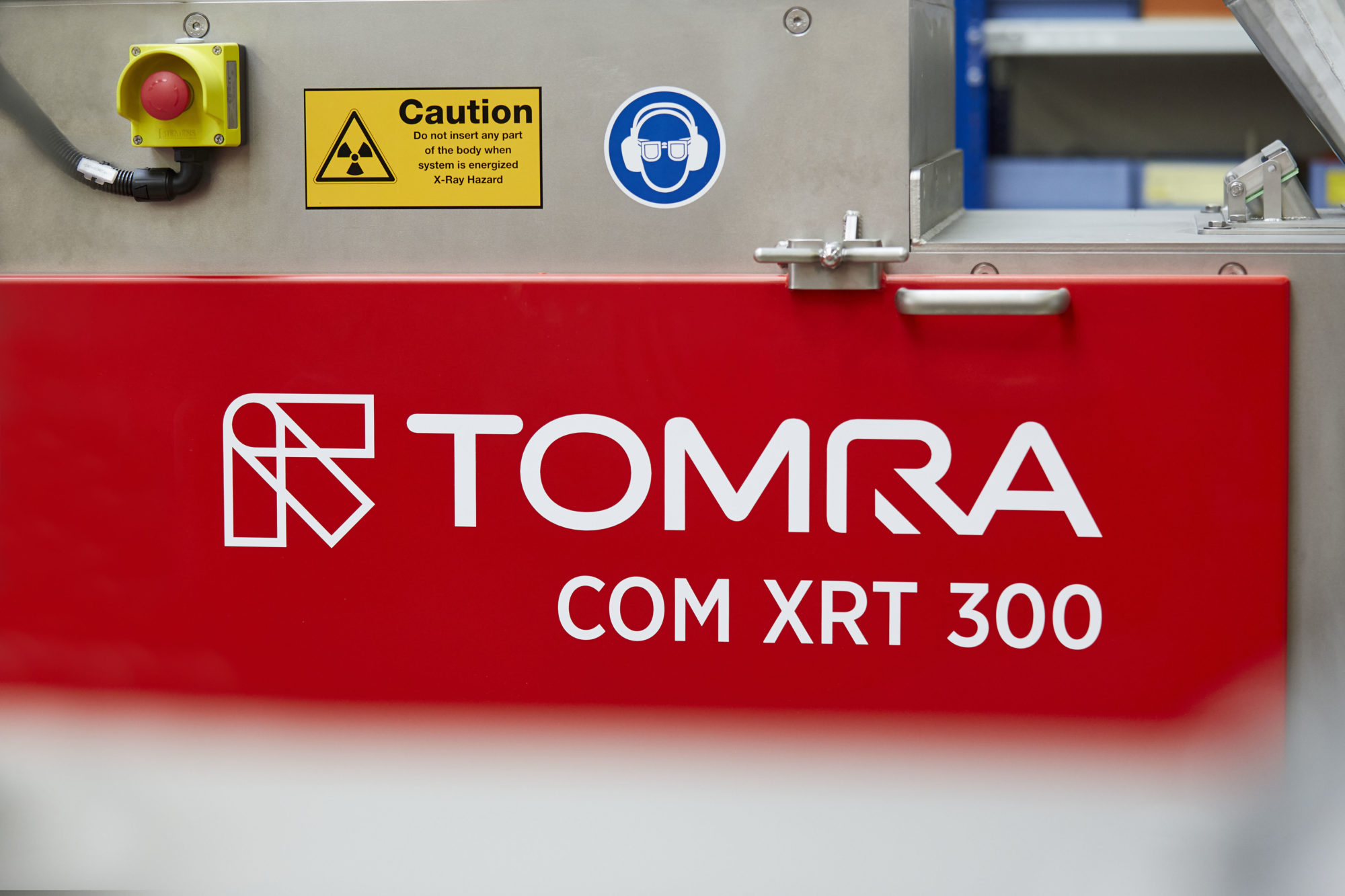TOMRA Sorting Mining says it is breaking new ground with a “unique” X-ray Transmission (XRT) Final Recovery solution that guarantees 99% diamond recovery.
With the new introduction, TOMRA is the first company in the industry able to supply a full diamond recovery solution using XRT technology from 2-100 mm, coupled with all the benefits of cloud computing for monitoring and managing the entire process, it said.
The new TOMRA COM XRT 300/FR final recovery sorter delivers concentration factors of up to one million with limited stages and is the only solution on the market that guarantees more than 99% diamond recovery, according to the company.
“The new sorter stands out for the high sorting efficiencies, the high diamond-by-weight concentrate, and the benefits deriving from its focus on a single consistent detection principal, diamonds,” the company said. “With this new introduction, TOMRA offers a complete partnered diamond recovery ecosystem with a flowsheet covering the entire process – from concentration to final recovery and sort house – and includes custom development with the end-user all the way to installation, then continued management of the asset and support with specialised services and training.”
The TOMRA COM XRT 300/FR is the latest step in TOMRA’s long-term diamond sector strategy, Geoffrey Madderson, Diamond Segment Manager for TOMRA Sorting Mining.
“We always had this clear objective, but the technology just didn’t exist,” he said. “We knew that to achieve our goal, we would need extremely advanced sensor technology. We have been working in-house on the development the new ultra-high resolution sensor more than five years, and now we are able to close the loop: the COM XRT 300/FR is the last piece within our recovery process, covering the final recovery and sort house applications to produce an ultra-high diamond-by-weight concentrate.”
TOMRA says its holistic approach and unique offering has earned a strong market trust in its XRT technology. As a result, the first three TOMRA COM XRT 300/FR sorters produced have already been sold to customers, all of whom purchased the machines on the back of their experience of previous TOMRA sorters.

The makeup of the TOMRA COM XRT 300/FR sorters sees input material evenly fed via a vibration feeder onto a conveyor belt. An electric X-ray tube creates a broad-band radiation, which penetrates the material and provides spectral absorption information. This is measured with an X-ray camera using DUOLINE® sensor technology, which focuses on a single, constant property of the material, density, it explained.
The advanced ultra-high resolution sensor information is processed and analysed by our TOMRA’s new Image Processing Pipeline to provide a detailed “density image” of the material, allowing it to be separated into high- and low-density fractions. If diamonds are detected, it commands the control unit to open the appropriate valves of the ejection module at the end of the conveyor belt. The detected diamonds are separated from the material flow by jets of compressed air. The sorted material is divided into two fractions in the separation chamber.
The tight tolerances and accurate alignment of the new ultra-high resolution sensor results in a high-quality picture that ensures a clear discrimination between diamonds and low-density materials down to 2 mm, according to TOMRA. The sorter features high-speed valves with a fine nozzle pitch, which significantly reduces non-diamond material in the concentrate. The result is ultra-high diamond-by-weight concentrate with a guaranteed recovery of more than 99%, the company claims.
It is possible to replace multiple sorting stages with a single TOMRA COM XRT 300/FR sorter all the way down to hand sorting, according to the company. In the final recovery application, the sorter targets the highest tonnage through the sorter that can be achieved with the highest recovery efficiency, which ranges from five tonnes to one tonne. As a result, the operation benefits from a smaller footprint and achieves much better grade.
It is also possible to replace hand sorting with a TOMRA COM XRT 300/FR. In a sort house application, it targets the highest diamond-by-weight concentrate possible, with about half the tonnage than final recovery, bringing multiple benefits. It removes the traditional bottlenecks around hand sorting efficiencies and eliminates the human error factor, the company says. In addition, it provides a high level of security by protecting the product from human intervention.
TOMRA’s partnered diamond recovery ecosystem includes consultation services during the development of the system and throughout the lifecycle of the equipment, support running the sorters, and help with specialised services and training. The company has also leveraged digital technologies to provide effective support, through its Virtual Demonstration and Test Solution and features such as the TOMRA Visual Assist Augmented Reality tool for remote assistance.
“With TOMRA, the customer’s entire recovery system falls into one ecosystem,” explains Madderson. “This allows for better compatibility and interconnectivity between the different applications of the recovery process. It gives our customers the full benefit of using cloud computing through our TOMRA Insight platform, which turns our sorters into connected machines. This enables customers to monitor and manage their recovery process in one easy-to-access place for both on-site and off-site management teams.”
TOMRA has set up a showroom dedicated to demonstrations of the TOMRA COM XRT 300/FR sorter at its Test Center in Wedel, Germany. Later in the year, TOMRA will also offer virtual demonstrations for those unable to travel to the Test Center.











